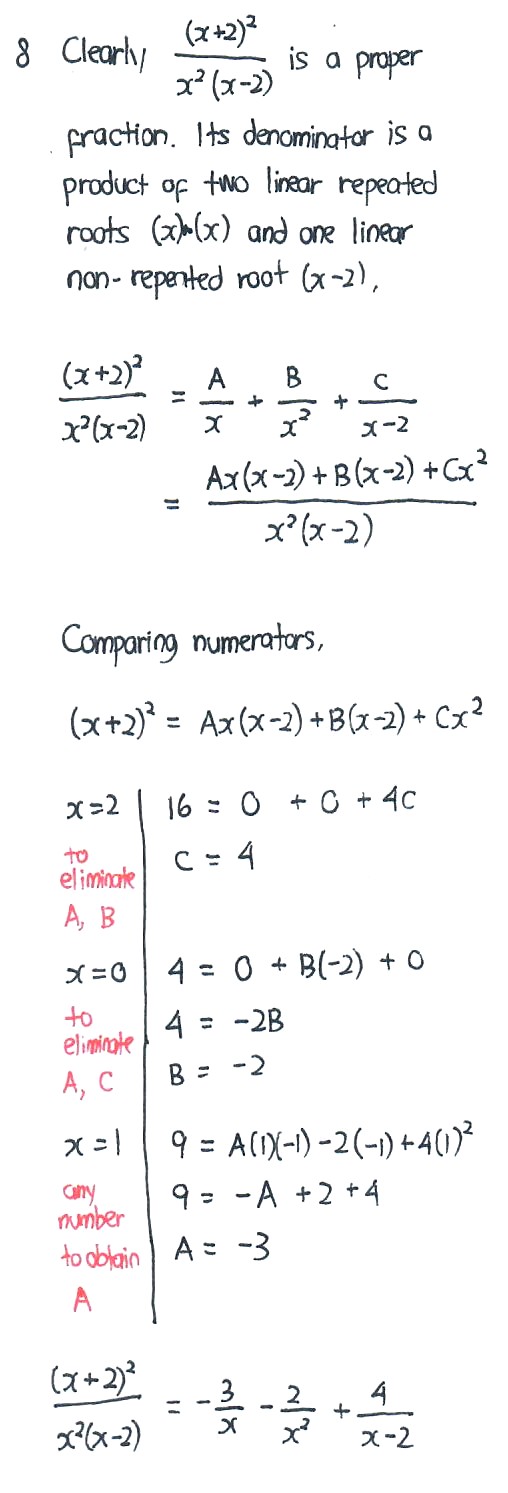Eric Nicholas K's answer to Irah Athirah's Secondary 3 A Maths Singapore question.
done
{{ upvoteCount }} Upvotes
clear
{{ downvoteCount * -1 }} Downvotes
First, you must identify whether the given fraction is proper or improper. If proper, you can jump to the next step. If improper, you must perform long division to obtain the sum or difference of a term ('quotient') and a proper fraction ('remainder/divisor'), and then we perform partial fractions on the proper fraction in the next step. It's like saying 56/3 = 18 + 2/3 where 18 is the quotient and 2/3 is the proper fraction.
In this case, the fraction is already proper.
Second, you must recognise the form to split. With repeated roots, we need to be careful.
Third, even though it's a partial fractions question, I like to make the RHS a single fraction first (where the denominator MUST be the same as the LHS) so that I can read off the numerators from there.
This is going to be identity solving.
Fourth, I use the 'sub value of x' method to obtain A, B and C. Choosing good numbers for x ensures an easy and smooth flow to obtain the numbers. Compare coefficients method is also possible, but possibly much longer.
Finally, we place back the values of A, B and C into the partial fractions form.
In this case, the fraction is already proper.
Second, you must recognise the form to split. With repeated roots, we need to be careful.
Third, even though it's a partial fractions question, I like to make the RHS a single fraction first (where the denominator MUST be the same as the LHS) so that I can read off the numerators from there.
This is going to be identity solving.
Fourth, I use the 'sub value of x' method to obtain A, B and C. Choosing good numbers for x ensures an easy and smooth flow to obtain the numbers. Compare coefficients method is also possible, but possibly much longer.
Finally, we place back the values of A, B and C into the partial fractions form.
Date Posted:
5 years ago


